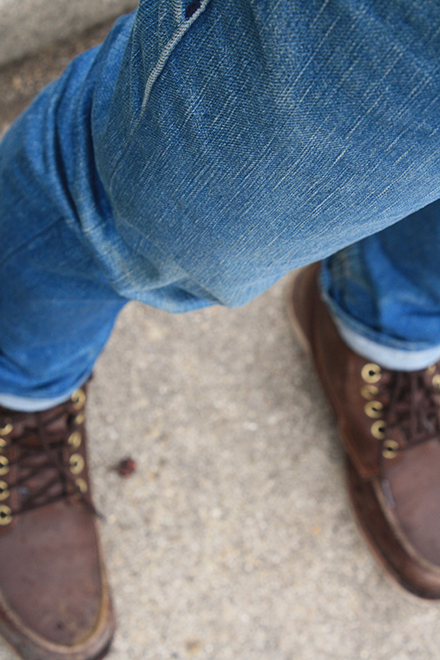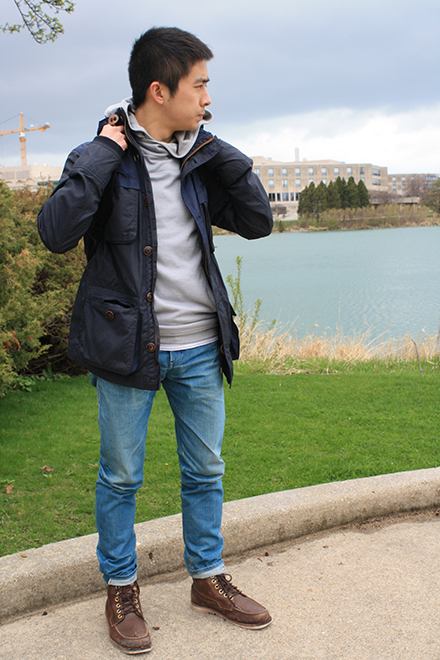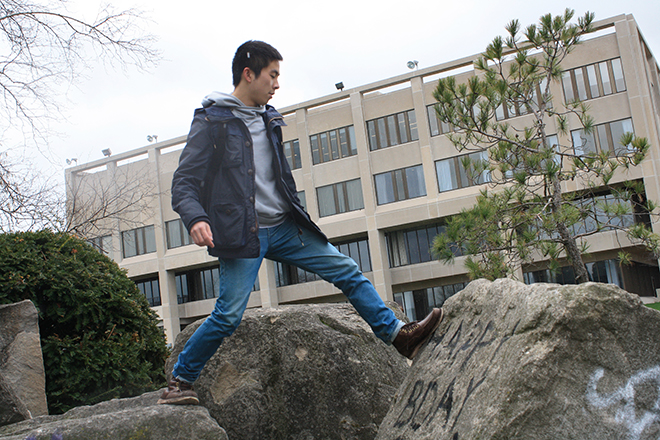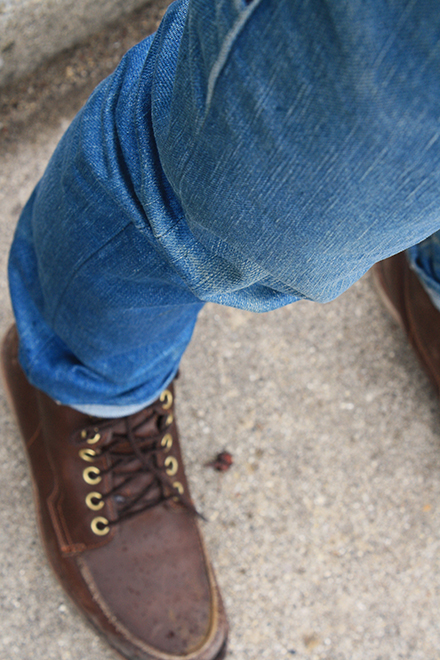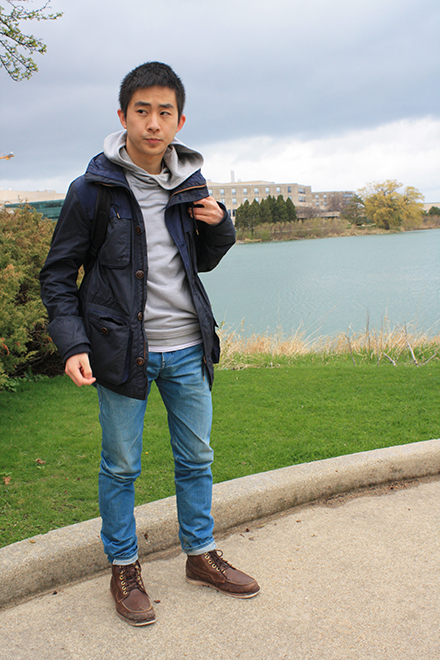His favorite pair of jeans is soft with faded creases in all the right places, the denim conforming to his legs like magic.
Two years ago, the same starting pair was seeping with indigo, rough like cardboard and stiff with starch. When he pulled it over his hips, it felt raw and unnatural – a foreign feeling to associate with a pair of jeans.
To the untrained eye, the denim probably looked like nothing more than a pair of dark wash jeans. But to the experienced eyes of those like Weinberg sophomore James Hu and other raw denim enthusiasts, this pair of jeans might actually be his Naked and Famous WeirdGuy Vintage Blue, about seven months in, or on another day, his prized Blue in Green x Pure Blue Japan XX-013 OW denim, faded to perfection.
Unlike the average pair of Levi’s that’s washed multiple times to increase softness and reduce shrinkage – jeans that you and I might buy – raw denim is unprocessed and untreated. When the indigo dye left in the pants rubs off in places where there's extra abrasion, wearers get creases personalized to their body shape – “honeycomb” creases around their knees and “whiskers” on their lap – and the opportunity to curate their own evolving piece of art. Getting from Point A to Point B could take anywhere from a span of months to a seemingly never ending process of years, but the process is “fun” and has a culture around it, Hu explains.
“As you wear it day after day, your jeans get customized to your lifestyle, which is what people like about it,” Hu said. “Any fade is cool, even a cellphone or wallet fade."
Here’s the catch: you can never wash your jeans. Else, throw caution to the wind and run the risk of ruining all your fades.
“Raw denim technique and care is actually a very debated topic, that I don’t think will ever be a solution for,” Hu said. “Some people say when you get it for the first time, you have to soak it in hot water to prevent shrinkage later on, while others are very adamant about no water contact at all.” The debate rages on: hot or cold water? Soaking once a month or every six months? What about detergent? Liquid or powder? (He uses powder, but recommends Woolite's dark detergent for insistent liquid detergent users).
Hu admits that if anyone’s interested in fading raw denim, the barriers to entry are high. He’s gone through at least two pairs himself, experimenting with trial and error on cheaper denim before he achieved his desired look.
“I messed up a lot. I tailored them wrong, soaked them at the wrong time and they turned out really bad,” he said. “There’s a huge learning curve. After a couple pairs of jeans, I finally learned what I wanted to do.” But even despite the setbacks, Hu was always keen to start on his next pair of jeans, a clean slate.
Hu, like many others, first got into fading raw denim through his immersion in the “hypebeast” fashion culture, an elite trend fueled by alacritous teenagers primarily from the Bay Area, Los Angeles and New York who indulge in expensive surf and skate brands. Brands range from The Hundreds to Obey, Supreme and Diamond Supply Co. To illustrate hypebeast price points, a pair of solid raw denim jeans can range in price from $40 to $500, with mid-tier brands like A.P.C costing approximately $265.
Even if you’ve never heard of hypebeasts, the word itself has a pretentious edge to it – a nose-in-the-air kind of declaration that describes the people who are all about high quality brands and trendy fashion. For raw denim, this is no different.
The irony is that raw denim is as simple and as American as apple pie. In the early 1900s, everybody wore raw denim. Up until the 1950s, around when blue jeans came to represent the post-WWII youth culture, it wasn’t a statement, but an assumed staple. But as modern industrialization abandoned old methods in favor of high-capacity looms and a faster assembly line, the new denim lost its authenticity and reputed quality. As a result, the old-style shuttle looms were shipped off en masse, where since, the Okayama Mills in Japan have preserved the vintage looms and still use artisanal methods to produce the top-tier selvedge denim today.
Even though he graduated almost two years ago, once in a while Hu still gets Facebook messages from anxious high schoolers with questions about their first pair of raw denim. At his high school in San Jose, Calif., the budding denim heads still look to Hu as a guru of sorts, asking for his opinion on the best brands and raw denim care. In the way that Abercrombie & Fitch is a static, “cool” middle school brand, fading raw denim has piqued high schoolers’ interests for a while now, as if to stay. It was cool in a novel way at first, but now, raw denim is cooler in a mainstream way.
“We were all ahead of the trend I guess,” Hu said of him and his high school friends. “So in that sense, I guess we were all hipsters.”
Novel or mainstream, wearing raw denim is a sneaky return to denim’s origins in the way that fashion does repeatedly revitalize itself, a yearning for something literally unprocessed by industrial copycats. That being said, the raw denim craze may never extend out of the coastal cities, where hypebeast culture is already deeply engrained. But the novelty will always remain for those who choose to invest the time, money and heart. At the very minimum, satisfying that endless hunt for the perfect pair of jeans.
